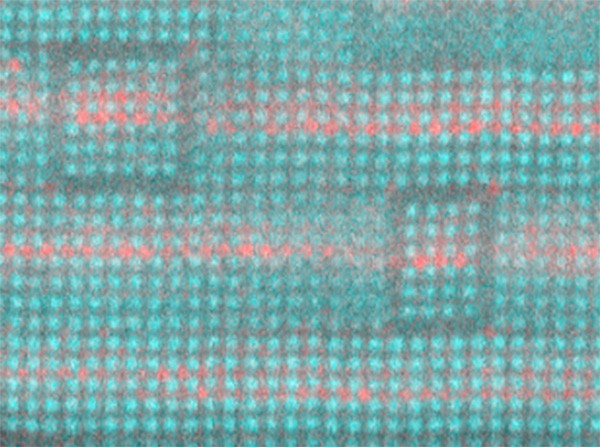This layered structure of strontium (not colored), barium (red) and titanium (teal) is a a tunable dielectric that can improve the performance of high-frequency electronics.
Millions of cellphones rely on barium-strontium titanate to adjust, or “tune,” their antennae circuitry and achieve clear reception. A Cornell-led collaboration has created a new material that will bring this clarity and extra bandwidth to the next generation of cellphones and other high-frequency electronics.
The team’s paper, “Targeted Chemical Pressure Yields Tuneable Millimetre-Wave Dielectric,” published Dec. 23 in Nature Materials.
Today’s cellphones, including the newest 5G phones, operate at frequencies below 6 gigahertz (GHz), but the second wave of 5G and anticipated 6G cellular communications will require frequencies above 30 GHz, a range in which barium-strontium titanate doesn’t perform well.
“Our material gives the same performance that you get in today’s cellphone material, at 100-times-higher frequencies,” said senior author Darrell Schlom, the Herbert Fisk Johnson Professor of Industrial Chemistry. “That’s a big deal because as you increase the frequency, you get more bandwidth. So more data can flow. And people are hungry for data, especially on their cellphones.”
Schlom partnered with David Muller, the Samuel B. Eckert Professor of Engineering, and Craig Fennie







